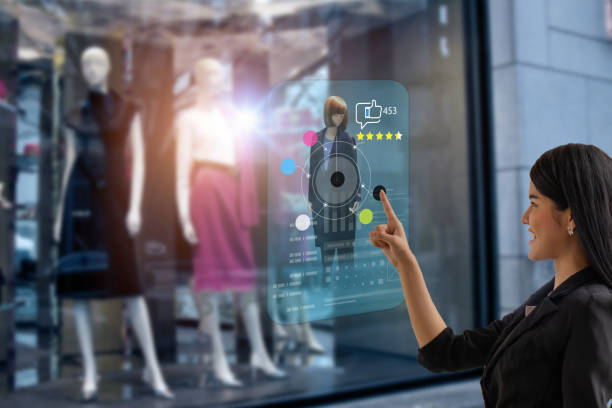Luxury and Beauty Trends Shaping the Market

Q1. Could you start by giving us a brief overview of your professional background, particularly focusing on your expertise in the industry?
I am a strategist with more than 20 years of experience in Business Intelligence and Trend Forecasting. I have expertise in the Fashion, Luxury, Design, Beauty, and Wellness Industries.
I now run the Head of the Innovation Division of a top-tier Italian packaging manufacturer, serving international luxury conglomerates and premium brands globally.
I assist clients in navigating cultural, economic, and societal challenges by leveraging data and insight about their customers' and consumers' changing demands and expectations.
Q2. How are market segments such as eco-luxury, digital beauty tech, and sustainable fashion performing in terms of annual growth rates?
The digital beauty tech industry has experienced significant growth in recent years. It is projected to reach a compound growth rate of 16% in 2025, which is almost $80 billion.
According to major forecasting institutions, eco-luxury and sustainable fashion are also expected to grow, with increases predicted between 1% and 3% globally by 2027.
However, I would predict these figures to change drastically in the next year or so due to the crisis affecting luxury brands and supply chains. These brands are becoming culturally obsolete and not relevant to the new cohort of global consumers, despite the attempts of many brands to reignite their appeal by diversifying their product offerings or with marketing strategies.
Q3. What are the latest trends in product development within the luxury and beauty markets? How is technology being integrated into new product offerings?
Product Development Innovation in the Fashion Luxury segment could sound oxymoronic, as luxury is tantamount to tradition, craftsmanship, and highly recognizable design. Innovations can be seen in premium and mass-market brands.
This is confirmed by Hermès's annual growth, which continues to grow (and recently surpassed LVMH) while maintaining iconic products and communication strategies.
Regarding the beauty market, the latest trends are the rise of indie brands (independent brands) and ‘ethical brands’, which focus on personalization and ingredient innovations, rely on micro-community of consumers and loyal customers, and sustainable practices.
The fragmentation of the beauty industry into niche brands reflects the changing perception of beauty. It is not a single, stable category to which people should adhere but rather a constellation of beauties that embrace individual characteristics and identities.
Technology plays a major role in AI-driven personal recommendation, smart skin and hair analysis, and smarter use of skincare products and fragrances. Virtual try-on tools are also booming.
When it comes to supply chain management, technology is also used to enhance customer experience, such as Immersive Shopping Experiences, Omnichannel Integration, Sustainable Technologies, 3D Printing, and Robotics.
Q4. Who are the key players in the luxury, beauty, and fashion sectors, and what innovative strategies are they employing to dominate the market?
In my opinion, the luxury sector is simply occupied by Chanel and Hermès, which are independent brands holding on to traditional, iconic products and distribution strategies. Brands gravitating within the biggest conglomerates like LVMH and KERING are premium fashion brands that share marketing and distribution strategies with mass-market and fast fashion brands.
Among key players, I would include Prada, Miu Miu, and Loewe because they are relevant to their consumer base and actively contribute to cultural, societal, and political debates.
Coty is still a major player in beauty brands; however, I would keep an eye on brands like Aesop and other niche brands with strong ethical positioning.
Q5. How is customer perception of luxury and beauty brands evolving with increasing digital engagement?
There is no single definition of luxury. Luxury means different things to different people based on age, geography, and cultural background. The traditional understanding of luxury as exclusivity and possession is no longer relevant: customers seek experiences over possessions.
Having said that, there is an increasing demand for cultural relevance from a product perspective and clear storytelling in product categories such as leather goods and apparel.
Digital Engagement with brands means that key players are constantly scrutinized for their promises, as well as from a pricing and supply chain perspective. Customers and consumers are becoming increasingly demanding and well-informed regarding value creation and are no longer content with ‘nice’ products.
Digital engagement in beauty also means a rise in on-demand and personalized product offerings to meet multiple audiences, each of which has a specific understanding of beauty. However, the plethora of data and insight into consumers' expectations, decisions, and fears could reinforce social insecurities about body image and physical appearance.
Brands should become actors of change and promote social and ethical values over profit if they want to succeed on the long term.
Q6. As the demand for personalized and culturally resonant luxury experiences increases, how are brands innovating their product offerings to meet these expectations?
Savvy fashion brands are leveraging technology to enhance online and offline customer experiences and increase the degree of personalization during shopping interactions.
From a product perspective, some are strengthening their sustainable collections and initiatives (like PRADA and its Re-nylon project and SEE BEYOND cultural programme), and others are exploring art collaborations and capsule collections to intercept mass market segments.
Q7. If you were an investor looking at companies within the space, what critical question would you pose to their senior management?
- How well do you know your current customer?
- What sort of customers would you like to shape through your product offering?
- Are you able to think and execute a business plan that does not follow capitalistic thinking?
Comments
No comments yet. Be the first to comment!
